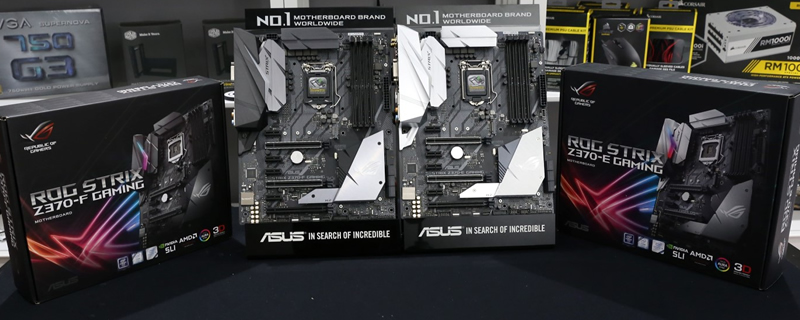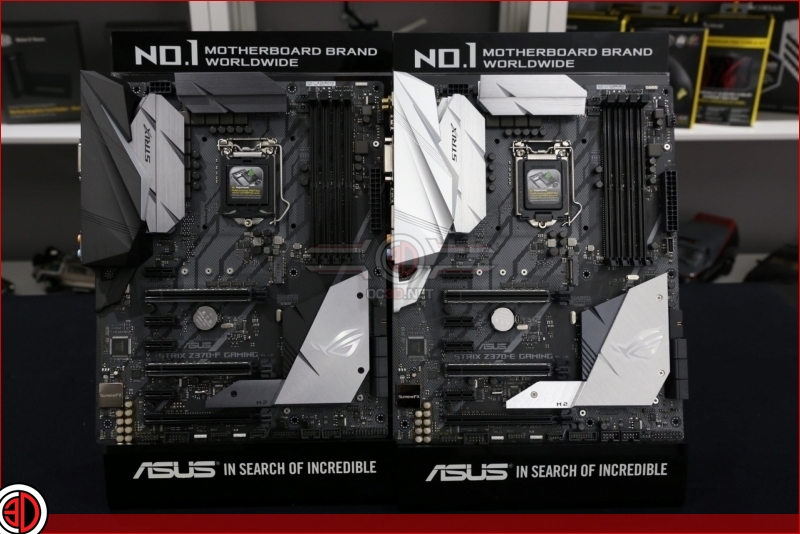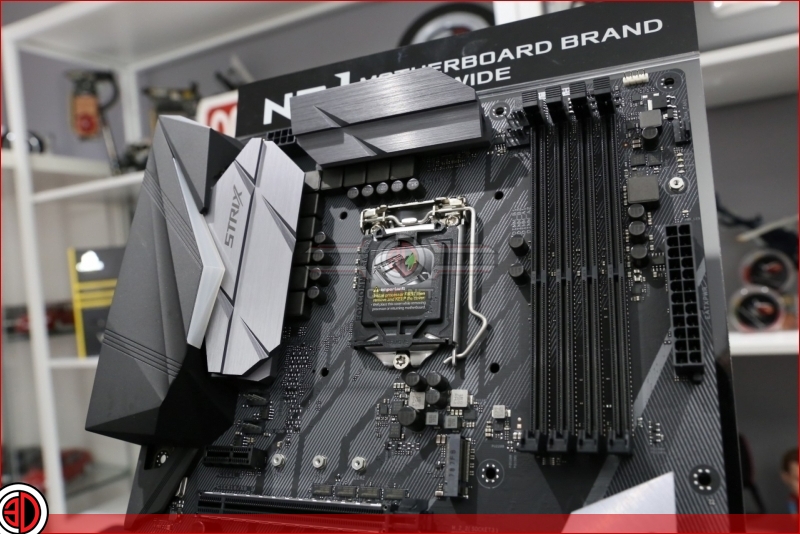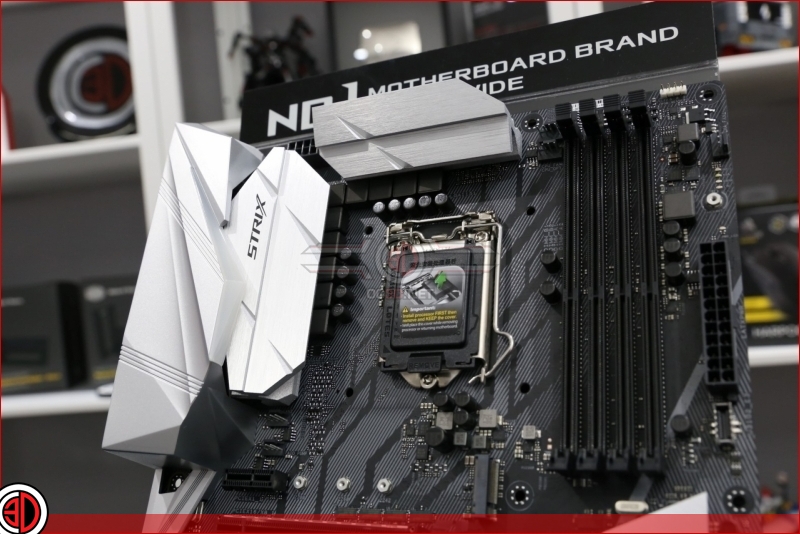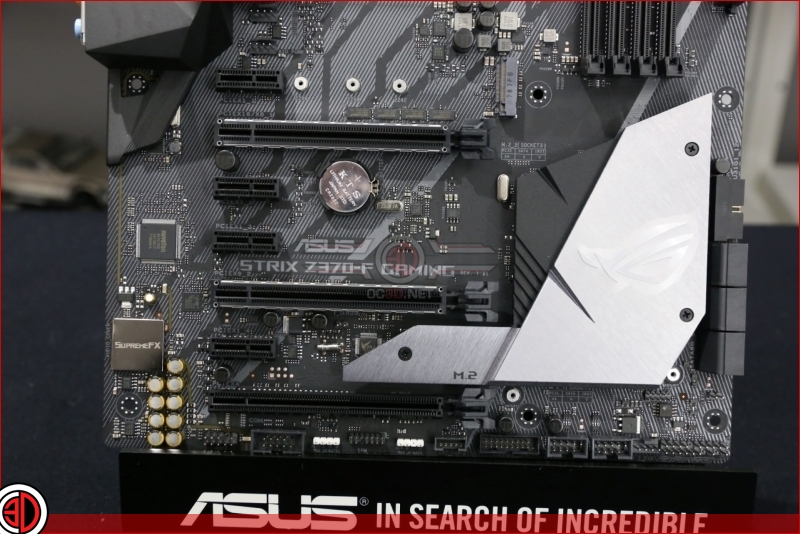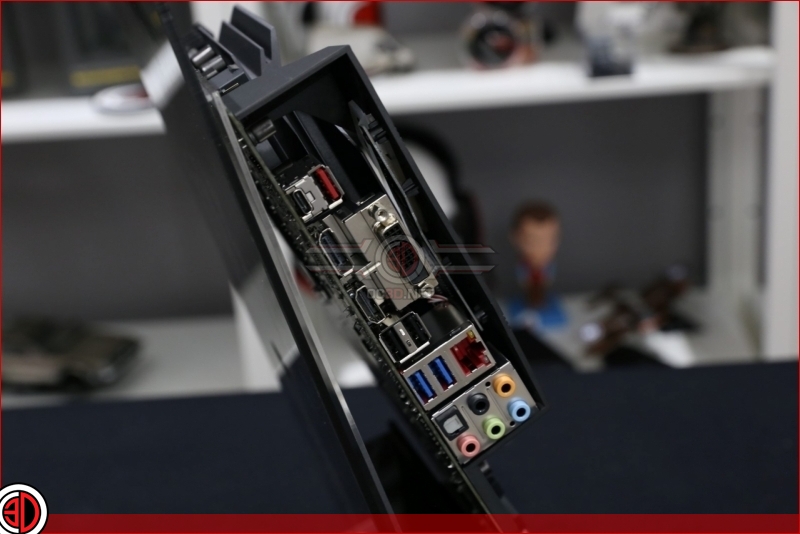ASUS ROG Strix Z370-E & Z370-F Gaming Preview
Up Close
When most users choose between these non-identical twins it is likely that colour preference will drive purchasing decisions rather than feature set, after all, £12 is not that much when purchasing a new CPU and mainboard.Â
Yes, the Strix Z370-E Gaming does feature support built-in WiFi and has an internal USB 3.1 Gen 2 header, but these features are not commonly used by the gaming audience that these boards are designed for, with wired internet connections being optimal and USB 3.1 Gen 2 support being absent from most modern PC cases.Â
Â
Â
The biggest visual difference between these boards is obviously the change from a black/silver colour scheme to a black/gunmetal-grey colour scheme when moving from the Z370-E to the Z370-F, though in these images we can see the inclusion of a USB 3.1 Gen 2 connection on just under the board’s 24-pin power connection.Â
In these images, we can see a lack of any meaningful change in these motherboards when it comes to component selection and placement, with both featuring the same power phase and heatsink designs. Â
Â
At the base of the motherboard, we can see that both boards feature two USB 3.0 internal headers, two USB 2.0 internal headers as well as standard 4-pin and addressable RGB LED connections.
The lower M.2 slot also features an M.2 heatsink design that is integrated on top of the motherboard’s chipset, which is easily removable using three screws and comes with a thermal pad pre-applied. This will be unusable with M.2 SSDs with integrated heatsinks, though underneath there is still and ROG Strix logo present, so the board does not look that bad when the chipset/M.2 heatsink/cover is missing.Â
Â
The rear I/O of these motherboards are almost identical, with the Strix-E variant offering support for dual WiFi antenna’s in addition to its Strix-F counterpart. Both motherboards come with dual USB 2.0 ports, two USB 3.0 ports and two USB 3.1 Gen 2 ports (one type-A and one type-C) alongside HDMI, DVI-D and DisplayPort outputs and a standard assortment of audio outputs. Â
Conclusion and Video
When looking at these twinned ASUS Strix motherboards the similarities are obvious, with both motherboards featuring an almost identical design in every way aside from a few features and their colour scheme. Â
The Strix Z370-E Gaming is the obvious leader here when looking at their feature set but given the under-utilisation of USB 3.1 Gen 2 on modern cases and the fact that most PC gamers prefer wired internet connections the purchasing choice between these motherboards will likely come down to colour scheme alone for most buyers.Â
That being said the feature set upgrade of the Strix Z370-E is well worth the extra £12 if you find these features useful. With both of these motherboards featuring a sub-£200 price, there is little to complain about here, given their high-end feature sets, and attractive aesthetics.
Even the petty niggles that some other boards in this price bracket are missing, with both boards shipping with six right-angled SATA 3.0 connections (no horizontal SATA ports) and with plenty of accessories in the box such as cable ties, cable labels and four total SATA cables.Â
We will be releasing full reviews for both of these motherboards within the next week, though for now you can view out other Coffer Lake content on the main OC3D website or discuss it on our Forums.Â
Â
You can join the discussion on ASUS’ ROG Strix Z370-E and Z370-F Gaming motherboards on the OC3D Forums.Â



